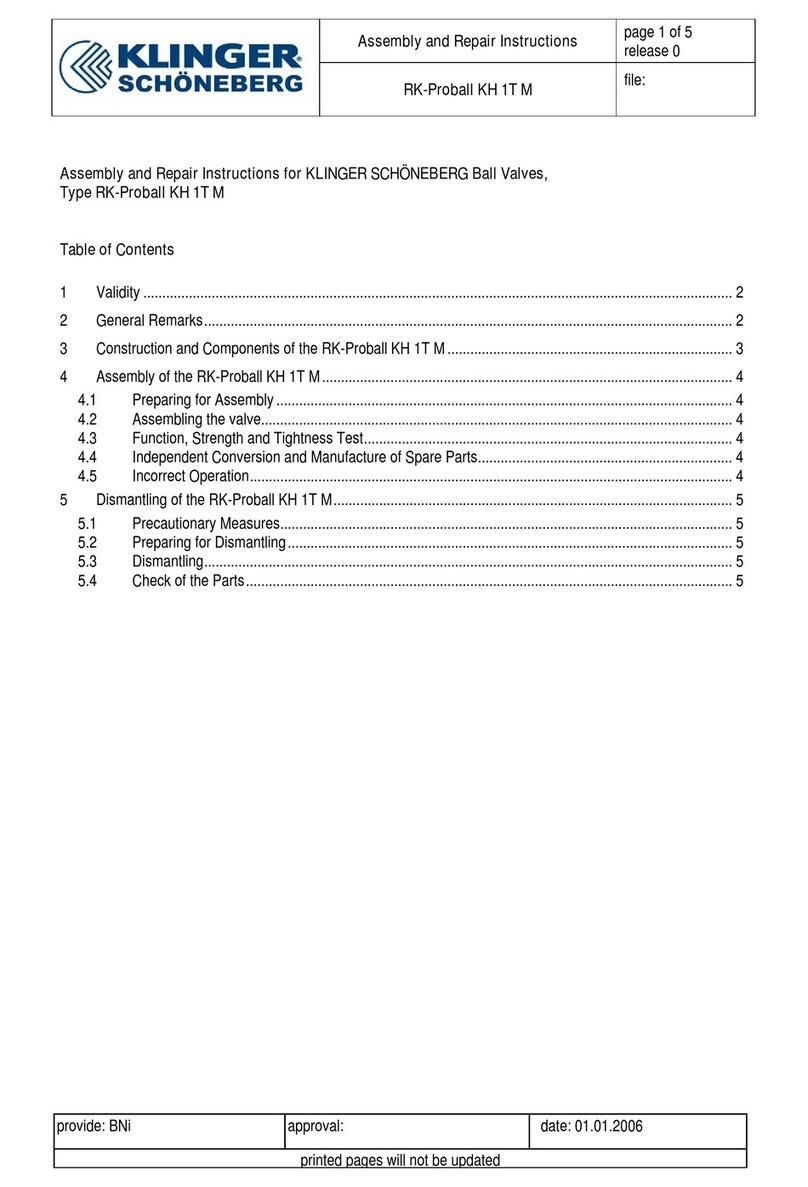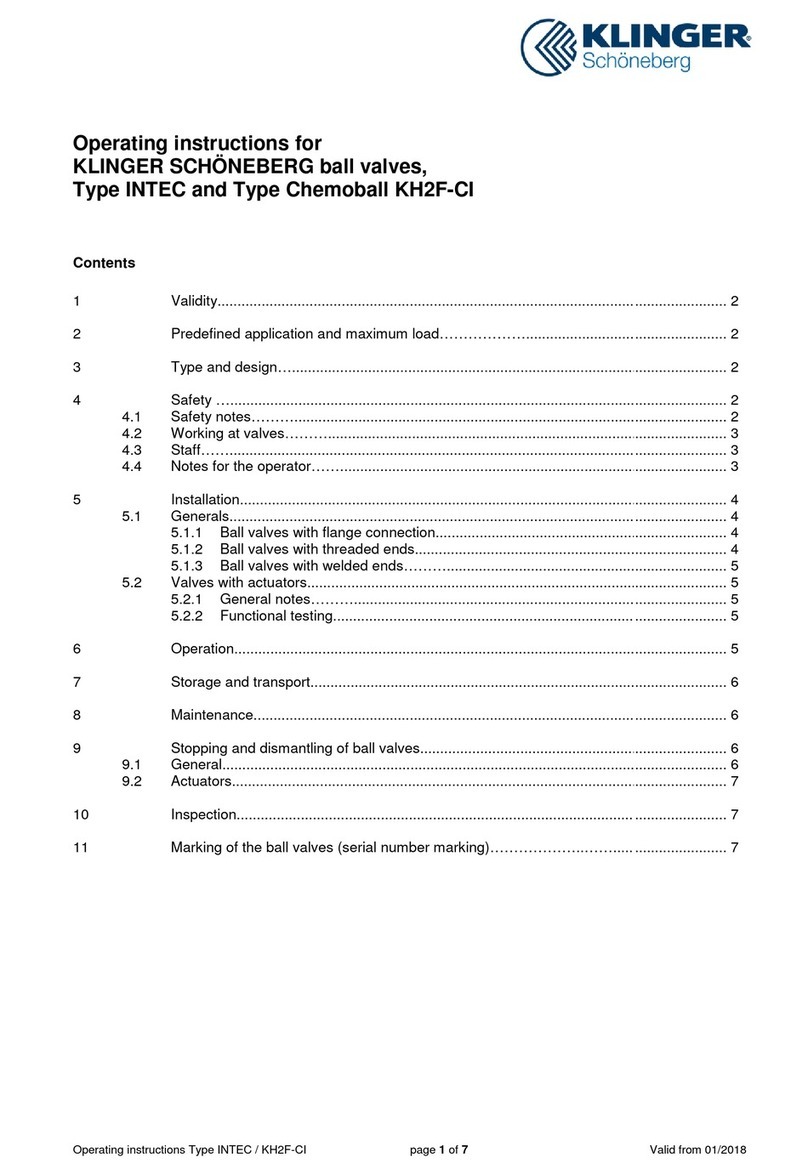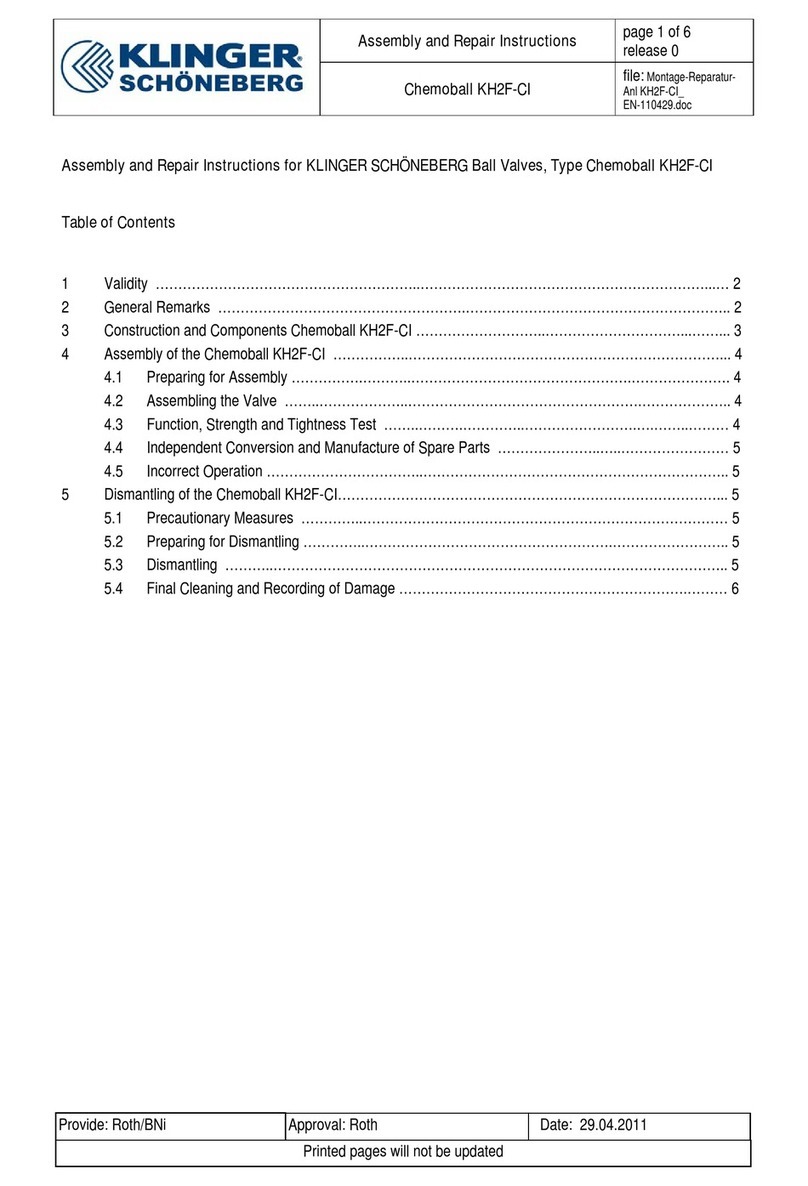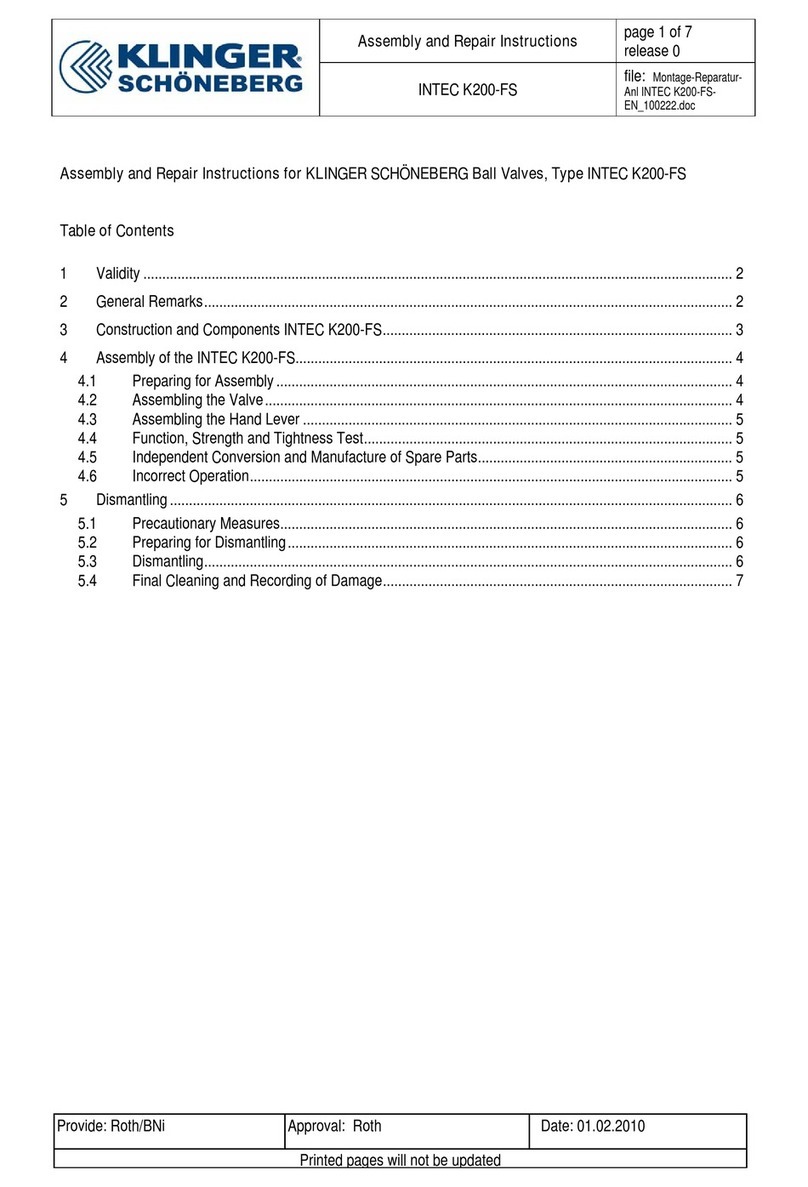
Assembly and Repair Instructions page 6 of 7
release 0
INTEC K221-STD file:
Provide: Grundl Approval: Rüdiger Roth
pages will not be updated
Date:08.0 .201
5Dismantling
5.1 Precautionary Measures
In order to ensure that any product residue which has remained in the cavity of the valve cannot lead to risk to the
staff performing the dismantling operation, appropriate protective clothing made of chemical and solvent resistant
material is to be worn on the entire body and a resistant facial protection.
For reasons of caution dismantling should be performed via a catch tank. Any toxic gases or vapours must be ex-
tracted so that they may not reach personnel. This also applies to the final cleaning after dismantling has been
completed.
The ball valves must be brought into a pressure-free state for the purposes of repair. For this purpose they should
be brought into the semi-open position. It will similarly be necessary to perform cleaning on the inside and outside
before dismantling. It is expedient to switch the ball several times during cleaning of the cavity.
5.2 Preparing for Dismantling
Before dismantling, the body (1), the cap (2) and the parts of the ball valve should be marked so that the assem-
bly positions can be understood later on.
5.3 Dismantling
For the purposes of dismantling the valve is tensioned again securely and safely in a suitable device. This is done
best on the flange of the body (1) in order to guarantee free access to the intermediate flange, cavity and stem.
Loosening the hexagonal screws (16) will permit the cap (2) to be removed. In order to avoid the balls (3) falling
out, the balls should first be brought to the open position (double-D crosswise to the valve conduit). After the ball
(3) is brought to a close position, it can be taken from the body (1).
Next the hand lever is taken off if present. For this purpose the hexagonal screw must be unscrewed and re-
moved completely because the screw positively screws into the stem and therefore would otherwise prevent a
removal of the hand lever. In the case of slow movement the hand lever can be opened up with a screwdriver or
wedge and pulled off more easily. If necessary the hand lever limit stop can also be dismantled.
After that the stem is dismantled. A suitable wedge must be driven into the tensioned slit of the nut to unscrew the
nut (14) so as to bring it back to its starting width. This cancels the generated own tension or self-locking in the
slit of the nut for the time of dismantling. Using a wrench, the nuts (14) can be screwed from the stem (8) in anti-
clockwise direction. In order to facilitate this process the device can be held with the dismantled hand lever or
suitable wrench on the double-D. The stem can now be carefully pressed into the ball area. Secure the stem
against falling down and damage. The bearing (13) can be removed and secondary sealing parts (11) (12) re-
moved from the cone.
Under circumstances it may happen that the primary sealing parts (9) (10) remain in the housing and make it dif-
ficult to remove the stem (8) with small nominal widths. Seals can be carefully pressed from their position in the
body in the direction of the body or stem using a screwdriver and then the stem removed more easily. Any dam-
age to the sealing area of the body (1) must be avoided.
The seat rings parts (4) ( ) (6) can then be dismantled.































